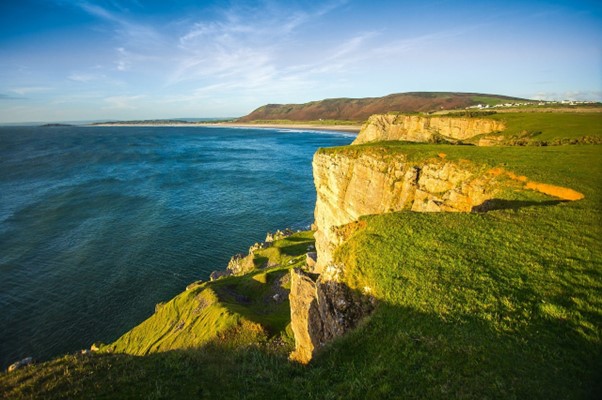Weeknotes 28/06/2024
Nice to see you this week, sun!

The week in numbers
- Japanese knotweed: what you need to know is at number five in the ‘most viewed pages’ chart
- Despite the dry weather, check flood warnings is still up there in second place (after the homepage) with 3614 views
- Average web page engagement time - 20 seconds
- Newborough car park map was downloaded 278 times - it’s consistently the most downloaded document on the site
- People called the customer hub 163 times by following a link on our web pages
How others are delivering at pace
Heledd caught up on the latest CDPS lunch and learn What does ‘good’ look like? with Chris Owen and Ian Vaughan from Neath Port Talbot. They’re doing some great stuff over at NPT, reflections include:
- important reminder of focusing on small things and delivering at pace
- measuring the impact of digital and service design and using that to build the case for service design and digital transformation
- empowering their teams to learn, develop and work
- their progress in delivering their digital strategy seems to be accelerated compared to many places - possibly proof of the importance of a Chief Digital Officer in leading and creating the right conditions for their digital, data and technology to do great work
We’re also looking forward to a meeting between our team and NPT team in coming weeks about how they’re using GOV.UK Pay, and Notify, as we’ve identified this as a priority area for us to improve.
Priorities
Heledd continues to try and figure out the answer to how and what we prioritise. How to prioritise your services, and your effort — Public Digital resonated, along with a mantra of “the strategy is delivery” and “do the small things”. It’s getting clearer, but it’s fundamentally dependent on having more collaboration, and clearer insight and data to back-up decisions.
Forms standardisation work
Phil, Sam and Kim’s work on forms continues with:
- Trello board to manage work
- shared account for all live forms
- standardised button text and save and continue wording
- thoughts on standardised way of naming forms (‘apply’ ‘cancel’ ‘notify’ etc)
- new spreadsheet of live forms to record progress
- spreadsheet of around 60 paper forms still on the site (mostly species licence applications and environmental permits)
Planning authority advice on phosphorus
Elsewhere, a new version of ‘Advice to planning authorities for planning applications affecting nutrient sensitive river Special Areas of Conservation’ has been published.
This page has grown significantly since it was first published over two years ago and the River SAC project team are already working on the next and hopefully the last iteration. Analytics show the page has a significant number of views – far more than would be anticipated for a page aimed at a very small section of users.
As it’s obviously attracting developers and other users concerned about water quality, the digital team will be working with the river SAC project team to split the next version up into more focussed task-based pages and creating content specifically for developers – which will hopefully be easier to find and understand.
Water quality web pages
We’ve agreed to do a mini audit of all the water quality related content on the site as it’s become a little unwieldy over the years. We’ll be looking at what content we currently have, what’s in the pipeline(!), who our users are and what they’re looking for. That should then give us a good baseline for reorganising it around how our users are looking for it.
Task based guidance
We’ve had a couple of requests recently for content aimed at a general audience to be added to guidance for specific industry users. Task based content focussed on specific users isn’t the place for us to try and disseminate messaging for a general audience – it gets in the way of the guidance and probably won’t be found. There are other ways to get that messaging across, including blogs, news articles and social media. Our content types help us decide where and how we publish something.
Other stuff we’ve been doing
- Sam and Alex are working on a couple of hazardous waste returns bug fixes
- Phil’s working on updates to felling forms
- Kim’s been working on forest resource plans and pay policy statements - and many intranet requests
- Shaun has made amendments to the water abstraction application forms this week to make it easier for abstractors to tell us who will be reporting their returns.
(Not so) Fun fact Friday
Philip von Siebold brought Japanese Knotweed to Kew Gardens, via the Netherlands, in 1850.
Back then, botany was a popular interest of the upper classes, like von Siebold. Botanists would fund their research trips to the Far East by sending their discoveries back to nurseries on the European continent.
Soon the plant was being distributed to garden nurseries around the UK. As well as being spread innocently by both them and gardeners sharing cuttings, it began to spread on its own, quickly popping up along river banks and newly-built railways lines.
Tackling this invasive species now costs the UK economy millions each year. Some of the sites chosen for the 2012 Olympics had so much knotweed that it cost £70m to clean them up.